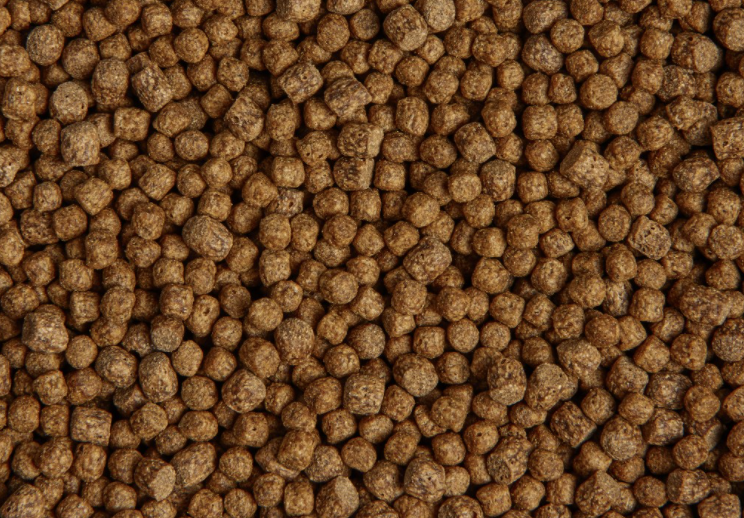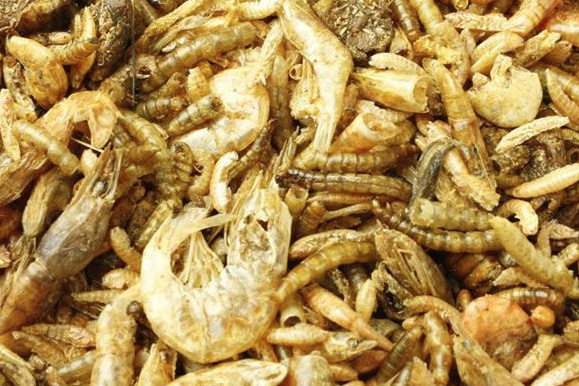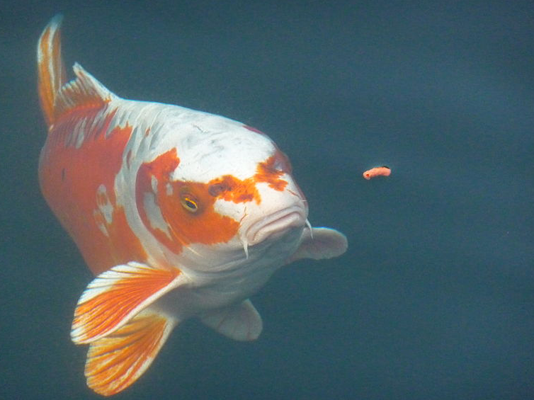A buyer’s guide to pond food
Getting the right food for your fish can be critical to their well being. Feed the right food and you can enhance growth, colour and a well-fed, strong, healthy fish is naturally more resistant to disease. Here’s what you need to know about pond foods.
Size
Small fish should be fed small foods and large fish, large ones, so when selecting your fish food choose either small, medium or large pellet size to best suit your fish. Floating foods do soften up when they take on water, enabling small fish to graze on larger floating foods, but it's nowhere near as good as offering them a particle size that they can fit in their mouths, and quickly, to retain maximum nutrition.
Flake, stick or pellet?
Although the most popular food for indoor fish, flake food isn’t as popular for pond fish as it blows away in the wind! You’d need to feed loads of it to big koi too. Handfuls and handfuls, which would be expensive. Food Sticks are the most popular pond food and are great value, but pellets tend to pack more actual food in per volume (the tubs and bags are heavier,) so pellets are more popular with koi keepers who need to feed a lot to keep their fish growing.
The highest quality, most premium pond foods tend to be in pellet form too. Pellets are also better for automated pond feeders.

Floating or sinking
Pond fish should mainly be fed on floating pond food. This encourages them to come to the surface to feed, meaning more visual enjoyment for you, and a chance to do a headcount and quick health check at the same time. Sterlet and Sturgeon, however, should be fed on sinking sterlet pellets as they are bottom feeders. Sturgeon diets also have a different nutritional profile to standard goldfish and koi foods.
What to feed and when
On an average spring or summer day, your fish can be fed a staple diet. Staple has average protein levels and represents an excellent every day, good value food. When the weather is hot and if you want more growth you can switch to a high protein or growth diet. Colour enhancing diets can be fed alongside staple or growth but when the weather cools down for autumn and winter, switch from all of the above to Wheatgerm.
Wheat Germ has lower protein and more vegetable constituents as fish cannot metabolise high protein in cold water. Feed Wheat Germ when the water temperature falls to 10C, and stop feeding altogether if it drops below 4C for extended periods.
How often to feed
Goldfish and koi farms feed their fish many times per day to encourage maximum growth, and you can do the same in warm weather if you have adequate filtration. Feeding little and often is best, and don’t feed if you see any floating food leftover. The fish have had enough.
As a general rule, once per day is enough throughout the year to sustain them. Offer as much as they will eat within about three minutes. Koi may eat all their food in much shorter times so watch them and ensure that all the fish have a chance to feed as larger, more boisterous koi will muscle their way in and take all the food for themselves.
If you have a surface skimmer turn it off to prevent it skimming off all the food as soon as you throw it in. If you can’t feed the fish every day consider investing in an automatic pond feeder which will do it for you, and several times per day if necessary.
If you don’t feed your fish for a while in an emergency, don’t worry, as large, healthy pond fish can go up to two weeks without food if they have to.
Treat foods
There is a large selection of treat foods available from mealworms to silkworms, freeze-dried and fly larvae. These can be fed alongside staple, growth and colour enhancing diets, as often as once a day in the summertime if you want to.

Are more expensive foods actually better?
A premium pond food may be better than a value one because it contains better quality raw ingredients, more protein (expensive,) and less waste. There may have been more research conducted into its nutritional profile and it may contain added ingredients such as prebiotics or probiotics to stimulate digestion or the immune system.
If you want to try new food on your own, feed the new food only for a month and observe your fish. Do they look more colourful, more active, fatter or thinner? Is the water clearer and is there more or less algae? If you don’t notice a positive change stick to what you fed previously. But if you offer a premium food occasionally as well as your standard staple, you may not notice a massive difference straight away.









